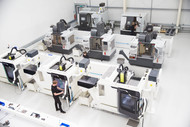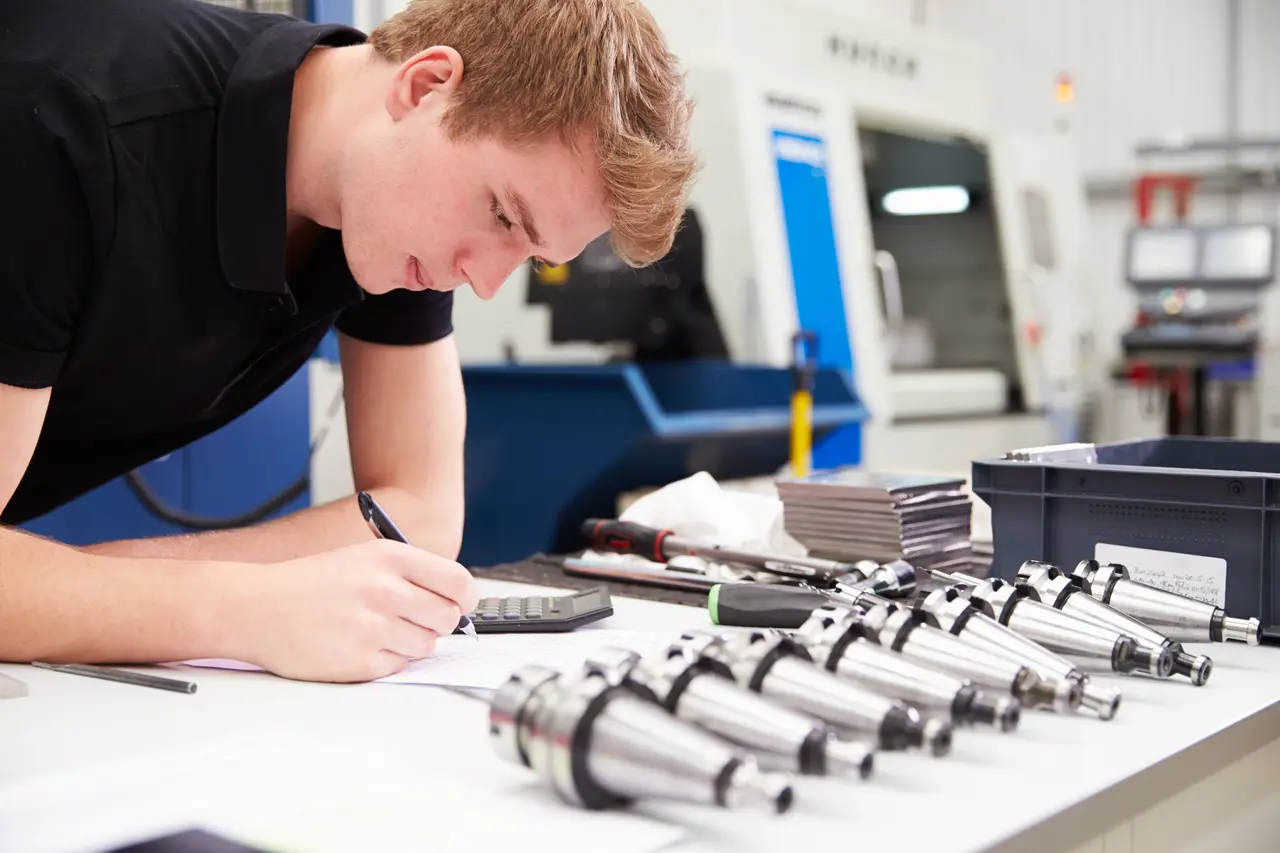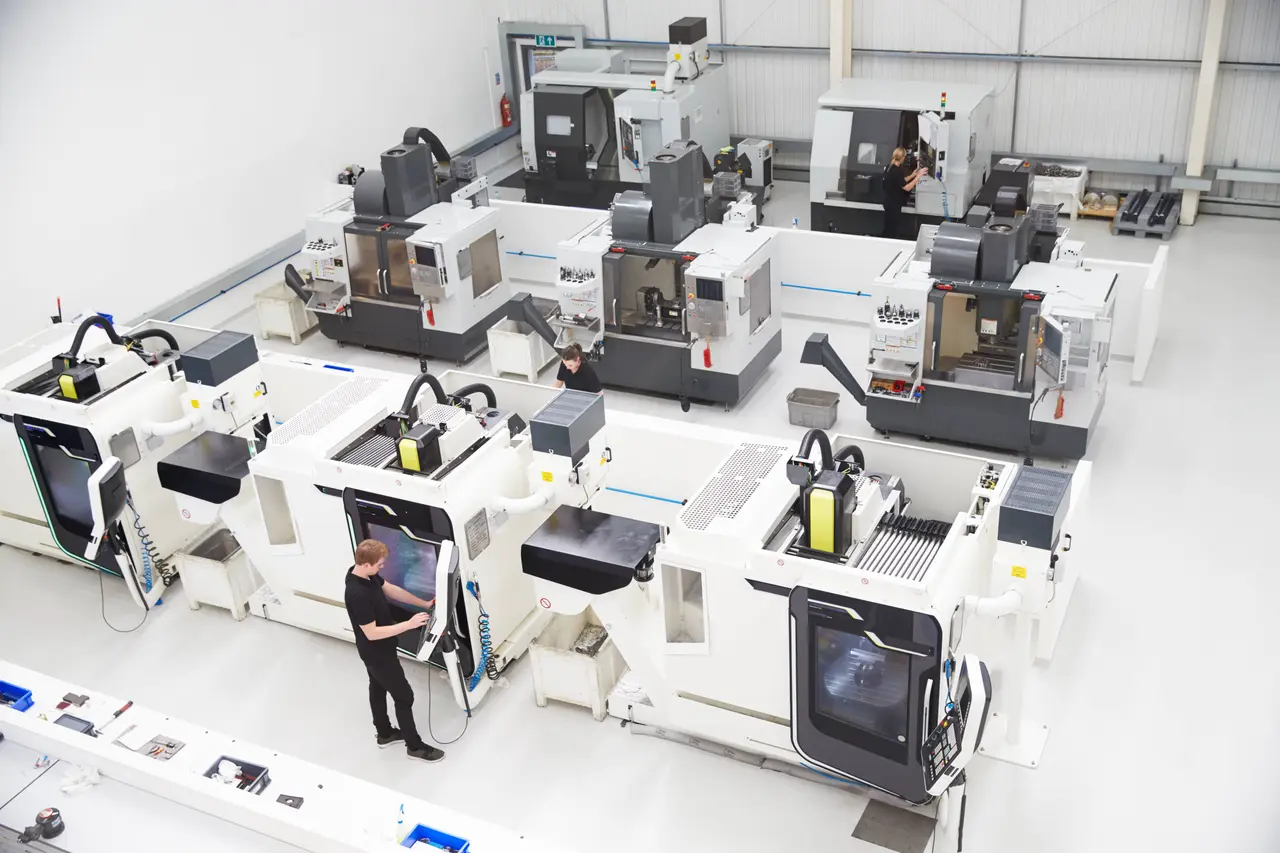Understanding the Role of Precision Milling in Modern Manufacturing Processes
Posted by RMT on Mar 21st 2024
Introduction to Precision Milling in Manufacturing
Precision milling is crucial in today’s manufacturing world. It's a cutting process that uses computer-controlled machines, known as CNC milling machines. These machines finely remove material from a solid block, known as the workpiece, to shape it into the desired part. Imagine it as sculpting, but instead of chisels, we use advanced tech. Why's it important? Precision. We're talking about the ability to produce parts with exact specifications, down to thousandths of an inch. This ability boosts efficiency, minimizes waste, and improves product quality across industries - from aerospace to electronics. In essence, precision milling has reshaped manufacturing, making it possible to produce complex parts quickly, accurately, and consistently. Try out our machine tool accessories at RMT for tool holders and more.
What is Precision Milling?
Precision milling is a key player in the manufacturing game, where details mean everything. Imagine it like sculpting, but instead of chisels and hammers, manufacturers use high-tech cutters and machines. These machines meticulously carve out parts from metal or other materials with the kind of precision that leaves no room for error. It's all about removing material, bit by bit, to meet exact specifications. Think of it this way: if you're cutting a diamond, each cut has to be perfect; precision milling works under the same principle but with materials like metals, plastics, and even composites. The goal? Produce parts with tight tolerances and smooth finishes that fit into complex assemblies like clockwork. Essential in fields ranging from aerospace to electronics, precision milling ensures that every component plays its part, no matter how small, with absolute perfection.
The Importance of Precision Milling in Modern Manufacturing
Precision milling is a cornerstone in manufacturing today, making it possible to shape materials with extraordinary accuracy. This process involves removing material from a workpiece using rotating cutting tools, achieving dimensions and finishes that other methods can't match. The benefits of precision milling are huge. It boosts efficiency because products are made quickly with exact specifications, reducing waste and saving time. Moreover, this accuracy improves product quality. Each piece is consistent with the last, which is crucial for industries where precision is non-negotiable, like aerospace and medical devices. Think of precision milling as the sharp, reliable knife in the toolbox of modern manufacturing. Without it, we wouldn't have the intricate components that power our technology and make our daily lives easier. So, it's not just important; it's essential in crafting the high-quality, reliable products we rely on every day.
Types of Precision Milling Techniques
In modern manufacturing, precision milling stands out for its ability to shape materials with outstanding accuracy. When we talk about types of precision milling techniques, we're diving into how manufacturers carve parts with exactness. First up, we have face milling, which focuses on cutting the surface of the material. It's great for achieving a high-quality finish. Next is peripheral milling; here, the focus is on the outer edges, shaping the piece by slicing along its sides. It's perfect for cutting deep slots or threads.
Then, there's end milling, where the business end of the mill does both the peripheral and face milling. Think of it as the multitasker in the group, great for detailed work like making pockets or channels in the material. Another key player is drilling, where the aim is straight down. This technique is not about shaping the exterior but creating precise holes, whether they're for screws or other components.
Each of these techniques plays a crucial role depending on the goal of the manufacturing process. Face and peripheral milling shape the surface and sides with finesse, while end milling and drilling jump in for the details, from cutting intricate paths to boring holes. By selecting the right technique, manufacturers can achieve the desired precision and characteristics for each part they produce.
Materials Commonly Used in Precision Milling
In precision milling, the material matters as much as the skill of the machinist. Common materials include metals, plastics, and composites, each bringing its strengths and weaknesses to the table. Metals like aluminum and stainless steel are favorites for their balance of weight, strength, and cost. Aluminum is lightweight and easy to machine, making it ideal for a wide range of applications. Stainless steel, known for its resistance to corrosion, stands up to tougher environments. On the plastic side, polyethylene and nylon are popular for their versatility and cost-effectiveness. They're easier to mill than metals and often used for less heavy-duty purposes. Finally, composites, like carbon fiber, offer a fantastic strength-to-weight ratio but can be challenging to work with. Each material requires a different approach in milling, directly influencing the project's success.
The Role of Precision Milling in Product Development
Precision milling plays a crucial role in the world of product development, allowing designers and manufacturers to turn their visions into tangible goods with incredible accuracy. This process employs cutting-edge technology to carve materials into precise shapes and sizes, vital for components that must fit together flawlessly or function seamlessly. By using precise milling techniques, manufacturers can ensure that each part of a product meets strict standards, thus enhancing the overall quality and performance of the final item. Whether it's creating intricate parts for electronic devices, automotive components, or medical equipment, precision milling gives developers the freedom to explore complex designs without compromising on reliability. Moreover, this process significantly reduces waste and improves efficiency, making it a cornerstone of modern manufacturing strategies that aim for sustainability alongside innovation.
Precision Milling Equipment and Technology
Precision milling equipment and technology sit at the core of modern manufacturing, turning raw materials into finished products with impeccable accuracy. Today's workshops boast CNC (Computer Numerical Control) milling machines, powerful tools that obey digital instructions to cut and shape materials to exact specifications. These machines can work with metal, plastic, and even wood, making them versatile heroes in the manufacturing world. High-speed spindles, advanced cutting tools, and sophisticated software come together to shave, sculpt, and perfect materials at a pace and precision manual methods can't match. The technology keeps evolving, pushing the boundaries of what can be made and how fast. Whether it's creating complex components for aerospace or simple parts for everyday gadgets, precision milling technology is the backbone, ensuring every curve and cut meets the mark.
Advantages of Precision Milling Over Traditional Methods
Precision milling kicks traditional methods to the curb for several good reasons. For starters, it’s way more accurate. We're talking about the ability to cut materials down to the tiniest measurements, something old school methods can't touch. This means products turn out exactly the same, part after part, which is crucial, especially when making things like medical devices or parts for cars. Then there's speed. Precision milling machines work fast, really fast, slashing production time like a hot knife through butter. This speed does not only mean getting products out the door quicker, but it translates to savings in labor costs too. And let's not forget flexibility. These modern marvels can handle just about any material you throw at them - metals, plastics, you name it, making them versatile players in the manufacturing game. Lastly, precision milling is kinder to the environment. With its ability to make precise cuts, there’s less waste material left over, making it a more sustainable option. In a nutshell, if you're not using precision milling, you're stuck in the past.
Challenges and Solutions in Precision Milling
Precision milling faces several hurdles, but solutions are on the horizon. One major challenge is the wear and tear on tools due to the high-speed cutting involved. This not only slows down production but also hikes up costs. The answer? Investments in high-quality, durable tools and regular maintenance checks. Another issue is precision. Getting those exact cuts can be tough. Advanced computer numerical control (CNC) technology is the game-changer here, allowing for precise cuts every time. Then there's the problem of material waste. No one likes to see resources go down the drain. Optimizing the milling process with better planning and using computer-aided manufacturing (CAM) software can greatly reduce waste. Lastly, keeping up with the rapid pace of technology can be daunting. Continuous training and embracing new technologies head-on can help overcome this. In sum, while precision milling has its challenges, the right strategies and tools can turn these obstacles into opportunities for efficiency and innovation.
The Future of Precision Milling in Manufacturing Industry
Precision milling has reshaped the manufacturing landscape. It's no longer just about cutting metal; it's about doing it with unparalleled accuracy and efficiency. The future of this field is bright and charged with potential. As technology advances, we're staring down the barrel of even more precise, faster, and cost-effective milling methods. This evolution means manufacturers can produce parts with complex geometries that were once deemed impossible.
In the coming years, expect to see a surge in automation. Robotics and AI are set to take center stage, making milling operations more streamlined and less reliant on human labor. This shift is not just about cutting costs but enhancing consistency and quality across the board.
Moreover, the integration of the Internet of Things (IoT) in milling machines will push the envelope further. Machines will no longer operate in isolation. They'll communicate, adapt, and make decisions based on real-time data. This connectivity promises better maintenance strategies, reducing downtime and operational costs.
Sustainability is another key player. The industry is moving towards more environmentally friendly practices, including the use of recycled materials and energy-efficient machines. This green approach will not only minimize environmental impact but also meet the growing demand from consumers and regulators for sustainable manufacturing processes.
Lastly, customization will become the norm, not the exception. With precision milling, small batch sizes with highly customized specifications will become more affordable, opening new doors for innovation and creativity in product design.
In essence, the future of precision milling in the manufacturing industry is one of smart, sustainable, and highly efficient operations that embrace both technology and environmental responsibility. This journey is just beginning, and the possibilities are as limitless as our capacity for innovation.





